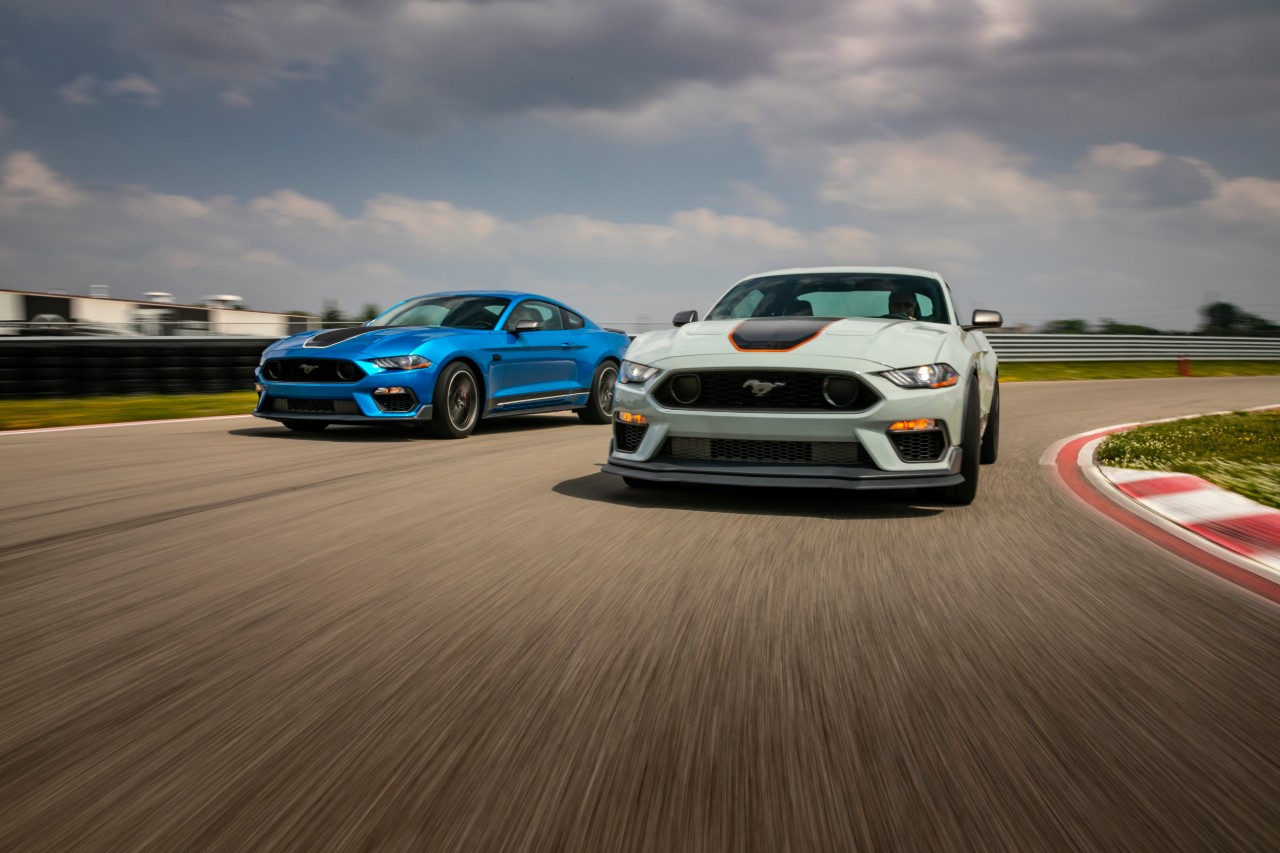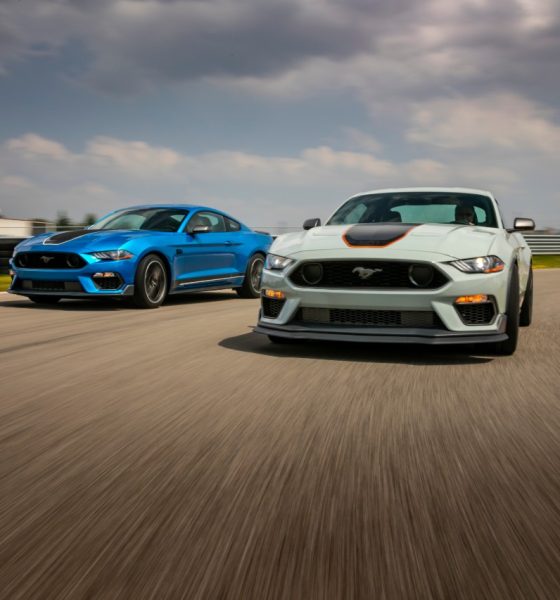Ford Motor Company’s 2020 Sustainability report outlines the legacy automaker’s plans to become carbon neutral by 2050. In an attempt to solidify itself as an environmentally-friendly car maker with a goal that would decrease its contribution to global climate issues, Ford chose a conservative route instead of a challenging one that would assist the transportation sector’s strong push toward sustainability.
Tesla’s road to environmentally-friendly transportation started well before Elon Musk’s 2006 draft that is known as the “Master Plan.” Musk knew that CO2 emissions were threatening lift on Earth and that a change needed to be made. Fourteen years later, Tesla sets on top of the automotive world as the leader in electromobility, and arguably could be recognized as the company that made legacy automakers rethink a business model centered around gas-powered machines that are harming the Earth and its atmosphere.
A company with a short, but rich history like Tesla realized the issue was here before the first Roadster even rolled off of the production lines. However, Ford, a company that recently celebrated its 117th birthday, does not seem to recognize the issues at hand, pushing a date for its sustainability goals that sits 30 years down the road.
https://twitter.com/Ford/status/1275820983299870722
In 2018, Ford sold the most vehicles on Earth with 2.38 million units, according to EVadoption.com. However, the company can only attribute .39% of its total sales to its electric cars, which at the time only accounted for the Ford Focus EV. Although the company is planning to introduce its Mustang Mach-E, an all-electric version of the F-150 pickup, and three other models within the next few years, it seems to be too little, but it’s not too late.
Ford’s first step in moving toward sustainability is to introduce a fully-electric fleet well before 2050. Thirty years is far too long as other automakers, like Volkswagen, are pumping in billions of dollars into plans that involve making a lineup of vehicles battery-powered and not combustion-driven. Ultimately, the effort relies on recognizing the problem that gas-powered transportation gives to the environment, and Ford has to realize that its goal is far too distant. Change is needed now.
It is not all bad, though. Ford does plan to use locally-sourced renewable energy for all manufacturing plants globally by 2035. This effort bodes well for the company’s mission, and will undoubtedly help Ford move toward carbon neutrality.
The question is: Where is the urgency? Several countries around the world have already announced their intentions to phase-out fossil fuels. Of the fourteen that have announced bans of gas-powered vehicles, only one has a goal of 2050: Costa Rica.
Many of the locations are considering 2025, 2030, or 2040 as the year when gasoline and diesel-powered machines will no longer be permitted. If Ford doesn’t adopt a quicker timeframe, it could spell trouble for the automaker in these locations, which include large, dense car markets like China, Germany, India, and Spain.
Electric vehicles are becoming more popular, and Tesla is leading the charge. The company has inspired many automakers to adopt its style with minimalism, and its goal with sustainability. Many companies have gotten on-board with the idea, setting lofty goals that will accelerate the shift from gas to batteries. However, Ford is treating its sustainability plan as a way to gain support from a growing community, and not as a way to decrease its carbon footprint promptly.
It’s an emergency, Ford, and it is time to start acting like it.
Ford Sustainability Report 2020 by Joey Klender on Scribd

Elon Musk
Elon Musk’s X will start using a Tesla-like software update strategy
The initiative seems designed to accelerate updates to the social media platform, while maintaining maximum transparency.

Elon Musk’s social media platform X will adopt a Tesla-esque approach to software updates for its algorithm.
The initiative seems designed to accelerate updates to the social media platform, while maintaining maximum transparency.
X’s updates to its updates
As per Musk in a post on X, the social media company will be making a new algorithm to determine what organic and advertising posts are recommended to users. These updates would then be repeated every four weeks.
“We will make the new 𝕏 algorithm, including all code used to determine what organic and advertising posts are recommended to users, open source in 7 days. This will be repeated every 4 weeks, with comprehensive developer notes, to help you understand what changed,” Musk wrote in his post.
The initiative somewhat mirrors Tesla’s over-the-air update model, where vehicle software is regularly refined and pushed to users with detailed release notes. This should allow users to better understand the details of X’s every update and foster a healthy feedback loop for the social media platform.
xAI and X
X, formerly Twitter, has been acquired by Elon Musk’s artificial intelligence startup, xAI last year. Since then, xAI has seen a rapid rise in valuation. Following the company’s the company’s upsized $20 billion Series E funding round, estimates now suggest that xAI is worth tens about $230 to $235 billion. That’s several times larger than Tesla when Elon Musk received his controversial 2018 CEO Performance Award.
As per xAI, the Series E funding round attracted a diverse group of investors, including Valor Equity Partners, Stepstone Group, Fidelity Management & Research Company, Qatar Investment Authority, MGX, and Baron Capital Group, among others. Strategic partners NVIDIA and Cisco Investments also continued support for building the world’s largest GPU clusters.
News
Tesla FSD Supervised wins MotorTrend’s Best Driver Assistance Award
The decision marks a notable reversal for the publication from prior years, with judges citing major real-world improvements that pushed Tesla’s latest FSD software ahead of every competing ADAS system.

Tesla’s Full Self-Driving (Supervised) system has been named the best driver-assistance technology on the market, earning top honors at the 2026 MotorTrend Best Tech Awards.
The decision marks a notable reversal for the publication from prior years, with judges citing major real-world improvements that pushed Tesla’s latest FSD software ahead of every competing ADAS system. And it wasn’t even close.
MotorTrend reverses course
MotorTrend awarded Tesla FSD (Supervised) its 2026 Best Tech Driver Assistance title after extensive testing of the latest v14 software. The publication acknowledged that it had previously criticized earlier versions of FSD for erratic behavior and near-miss incidents, ultimately favoring rivals such as GM’s Super Cruise in earlier evaluations.
According to MotorTrend, the newest iteration of FSD resolved many of those shortcomings. Testers said v14 showed far smoother behavior in complex urban scenarios, including unprotected left turns, traffic circles, emergency vehicles, and dense city streets. While the system still requires constant driver supervision, judges concluded that no other advanced driver-assistance system currently matches its breadth of capability.
Unlike rival systems that rely on combinations of cameras, radar, lidar, and mapped highways, Tesla’s FSD operates using a camera-only approach and is capable of driving on city streets, rural roads, and freeways. MotorTrend stated that pure utility, the ability to handle nearly all road types, ultimately separated FSD from competitors like Ford BlueCruise, GM Super Cruise, and BMW’s Highway Assistant.
High cost and high capability
MotorTrend also addressed FSD’s pricing, which remains significantly higher than rival systems. Tesla currently charges $8,000 for a one-time purchase or $99 per month for a subscription, compared with far lower upfront and subscription costs from other automakers. The publication noted that the premium is justified given FSD’s unmatched scope and continuous software evolution.
Safety remained a central focus of the evaluation. While testers reported collision-free operation over thousands of miles, they noted ongoing concerns around FSD’s configurable driving modes, including options that allow aggressive driving and speeds beyond posted limits. MotorTrend emphasized that, like all Level 2 systems, FSD still depends on a fully attentive human driver at all times.
Despite those caveats, the publication concluded that Tesla’s rapid software progress fundamentally reshaped the competitive landscape. For drivers seeking the most capable hands-on driver-assistance system available today, MotorTrend concluded Tesla FSD (Supervised) now stands alone at the top.
News
Elon Musk’s Grokipedia surges to 5.6M articles, almost 79% of English Wikipedia
The explosive growth marks a major milestone for the AI-powered online encyclopedia, which was launched by Elon Musk’s xAI just months ago.

Elon Musk’s Grokipedia has grown to an impressive 5,615,201 articles as of today, closing in on 79% of the English Wikipedia’s current total of 7,119,376 articles.
The explosive growth marks a major milestone for the AI-powered online encyclopedia, which was launched by Elon Musk’s xAI just months ago. Needless to say, it would only be a matter of time before Grokipedia exceeds English Wikipedia in sheer volume.
Grokipedia’s rapid growth
xAI’s vision for Grokipedia emphasizes neutrality, while Grok’s reasoning capabilities allow for fast drafting and fact-checking. When Elon Musk announced the initiative in late September 2025, he noted that Grokipedia would be an improvement to Wikipedia because it would be designed to avoid bias.
At the time, Musk noted that Grokipedia “is a necessary step towards the xAI goal of understanding the Universe.”
Grokipedia was launched in late October, and while xAI was careful to list it only as Version 0.1 at the time, the online encyclopedia immediately earned praise. Wikipedia co-founder Larry Sanger highlighted the project’s innovative approach, noting how it leverages AI to fill knowledge gaps and enable rapid updates. Netizens also observed how Grokipedia tends to present articles in a more objective manner compared to Wikipedia, which is edited by humans.
Elon Musk’s ambitious plans
With 5,615,201 total articles, Grokipedia has now grown to almost 79% of English Wikipedia’s article base. This is incredibly quick, though Grokipedia remains text-only for now. xAI, for its part, has now updated the online encyclopedia’s iteration to v0.2.
Elon Musk has shared bold ideas for Grokipedia, including sending a record of the entire knowledge base to space as part of xAI’s mission to preserve and expand human understanding. At some point, Musk stated that Grokipedia will be renamed to Encyclopedia Galactica, and it will be sent to the cosmos.
“When Grokipedia is good enough (long way to go), we will change the name to Encyclopedia Galactica. It will be an open source distillation of all knowledge, including audio, images and video. Join xAI to help build the sci-fi version of the Library of Alexandria!” Musk wrote, adding in a later post that “Copies will be etched in stone and sent to the Moon, Mars and beyond. This time, it will not be lost.”










